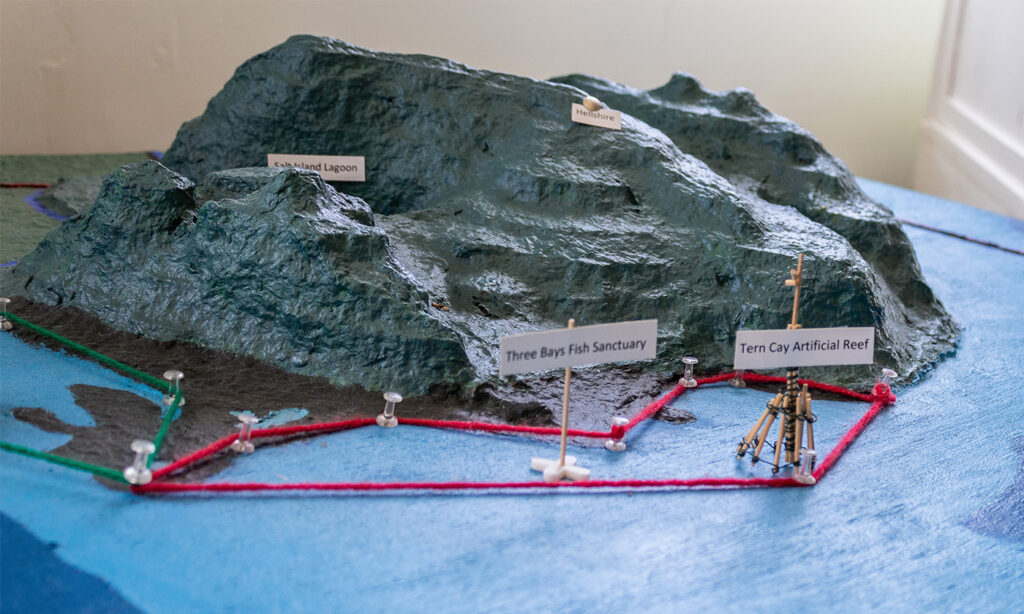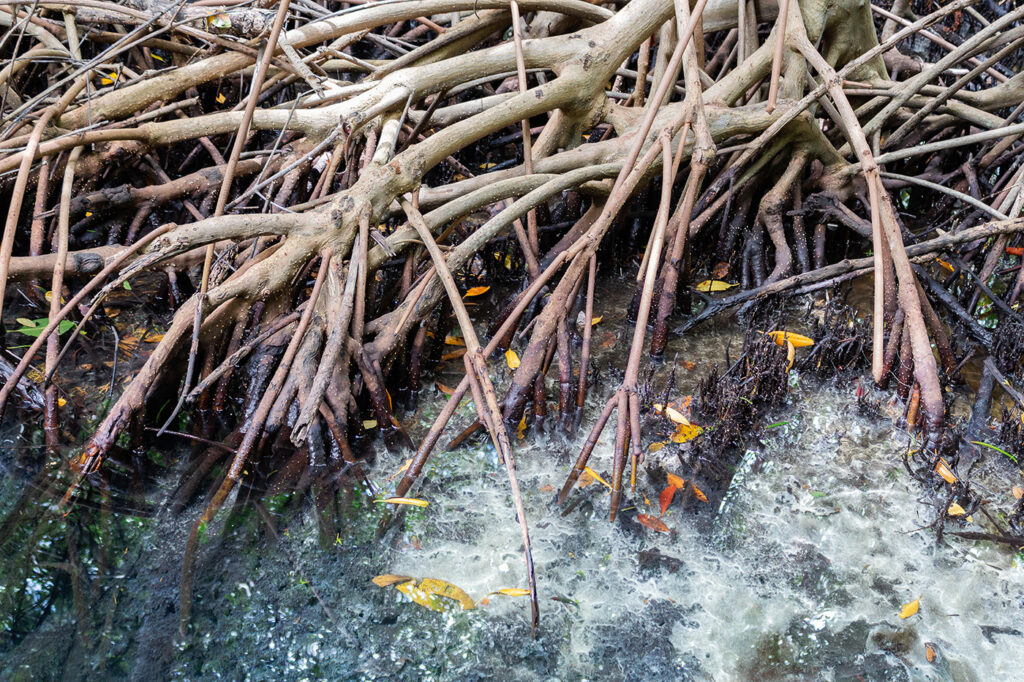News Based on facts, either observed and verified directly by the reporter, or reported and verified from knowledgeable sources.
Jamaica’s Climate-Resilient Coastline

The island of Jamaica has long been a cultural mecca and a tourist hot spot, but this Caribbean Eden sits in troubled waters. Thanks to impacts from climate change like coral bleaching, an increase in parasites and diseases, and extreme weather, and also overfishing by locals, the abundant life of the Caribbean Sea is dwindling. The fish stock of Jamaica and other Caribbean islands has been on the decline since the 1970s. As a result, life for people residing on the coast in Jamaica—where almost every aspect of life is connected to the outdoors—is changing too.
“When you have any kind of storm event, it disrupts life totally,” says Michael Taylor, co-director of the Climate Studies Group in Jamaica—a consortium of researchers from universities in the West Indies that aims to better understand the workings of local, regional, and global climate. “Climate is linked so strongly to our ability to develop and achieve the goals we aim for as a region.”
Many people and organizations are dedicated to developing and enacting solutions, including Jamaica’s budding blue-green economy—the informal network of sustainability entrepreneurs, regenerative ocean farms, and sanctuaries incubating on the island. Among them is the Portland Bight Protected Area (PBPA), that, since achieving its designated protected area status in 1999, has been an anchor for communities on the edge—not just of the island but also of the looming climate crisis.
Down by the Bay
“Bight” is an old nautical term to describe a concave coastal landmass that has a shelf and a shallow bay. Back in the 16th century, these characteristics allowed the Portland Bight to receive the first shipment of African slaves to Jamaican shores. The area long served as a health retreat, and one of its beaches, Hellshire, became the country’s premier tourist spot (until its shores receded dramatically in recent years). The Portland Bight has a rich ecological history too, and an array of unique natural resources like Salt River (the island’s only saltwater river). The area’s value to the country’s ecosystems is irreplaceable.
Today, the Bight spans a massive 1,872 square kilometers (723 square miles), including nine islands and cays. It holds 80% of Jamaica’s mangroves. All this biodiversity is contained within just 2 of the island’s 14 parishes—St. Catherine and Clarendon. So while it is the largest protected area in the country, what makes the Bight’s protected area special is its intimate connection and commitment to the local community.

The PBPA is run by its own dedicated foundation, the Caribbean Coastal Area Management Foundation (CCAMF), which operates three fish sanctuaries with the aim of developing job opportunities that don’t involve fishing or burning dry forests. The foundation has a policy whereby all hired work—resource protection, water quality testing, project management, etc.—goes to people living in the community.
“The founding members of CCAMF came up with the idea of selecting an area with an environmental uniqueness and a cultural uniqueness,” says Troy Franklin, the tours and events coordinator for the foundation. “They wanted somewhere where they had both the environment and the people together to sustain it.”
But then in 2004, hurricane Ivan and subsequently hurricane Dean did major damage to the mangrove forests along the Bight. This major blow to the coastline’s protective barrier allowed waves to come further inland during the storms, which destroyed homes as well as property along the coast. Community members who had their own small farms lost crops, and the land became difficult to farm because of the excess salt left behind.
Recovery in the aftermath of climate change-induced disasters is very difficult for small islands and developing states like Jamaica. A decade is often not enough time for full recovery.
Still, the CCAMF and the community continued to come together. On World Wetlands Day, February 2, 2011, the foundation, along with community members, launched a replanting project. Ten years later, the project is considered a success story by many who live along the Bight. This section of coastline now has the largest and densest mangrove forest in the country. “I think the forest is offering more protection now,” says Antonette Davis, a fish vendor in Old Harbor Bay. “We might have less rainfall these days, but whenever it does, it doesn’t affect us as much.”
Communities along the Bight have also found other ways to bounce back from the storm damage. “It was a lot of people that lost their livelihoods. People are still recovering, slowly but surely. People are rebuilding, and some are moving away from the coast,” Davis says
People who have decided to stay in the Bight have been able to benefit from more sustainable income streams such as harvesting wild shellfish, which has increased since the regrowth of the forest.
The water- and wave-absorbing power of wetlands and the salt-absorbing power of the mangrove forests have also provided a kind of economic security for communities. People know their homes and farm fields are less likely to get washed away with the next storm. This has empowered these communities to invest in dry-forest conservation in the Bight as well, which creates income opportunities from things like apiculture (beekeeping).

Alternative Livelihoods
The CCAMF’s alternative livelihoods project has partnered with the National Environment and Planning Agency (NEPA) to impact communities for the better. The partnership has led to an apiculture and honey production support initiative in the Bight, as well as an ecotourism program that will employ community members as guides and boat operators in the mangrove boardwalks and on the Salt River.
“Here in Salt River, we have a couple of people who are bee farmers. Selling honey not only serves as a way to make money outside of fishing, but the extra bees pollinating in the area increase the yield of certain crops,” says Marine Campbell, longtime resident of the Salt River community. “This year, the mango crop was more plentiful, and I believe it was because of the bees.” Even residents in Portland Cottage, one of the more remote communities along the Bight, report a similar but more modest interest in apiculture as a sustainable income stream.
Through efforts like the mangrove replanting, Jamaican communities have proven that commitment and teamwork are critical climate resilience measures. The dry-forest cutting and coal burning that used to be a means of income for many is being discouraged and phased out, with bee farming presenting as a more sustainable option yielding more benefits.
These days cutting down mangroves in the Bight is absolutely illegal and a punishable offense. Still, it’s not only police enforcement that has kept the area protected; an increase in public education plays its own role. According to Campbell, “I remember at one point they had a training by our church and we were invited. They taught us some of the importance of the mangroves and the different types. I would say people are more alert now when it comes to that.”
Community members are vigilant in their protection of the mangroves because they know what they stand to lose without them. The bond between the environment and the community remains strong, and the addition of management entities and government agencies such as NEPA helps to provide additional legitimacy to ensure these efforts continue.
The Caribbean Coastal Area Management Foundation’s director, Ingrid Parchment, is optimistic about the Bight and the work the organization has in store for it. She expects that the collaboration with the community will continue to grow as they welcome the participation of more community members and donors, as well as government and the private sector. She hopes that more and more people will visit the Bight, not only to learn about Jamaica’s natural history and resources, but also to understand more about climate change adaptation actions—and, critically, to meet the people who continue to call Portland Bight home.
This story was produced with the support of the Pulitzer Center.

|
Gladstone H Taylor
is an author/journalist living and operating out of the creative industries of Kingston, Jamaica. He has been writing professionally for over eight years. He’s reported on the environment, culture, music, film, and tech through platforms such as Mongabay, The Fader, Sole DxB, Bandcamp, The Face Magazine, RollingStone, Afropunk, Syfy Wire, and PopDust, to name a few. He is a member of Covering Climate Now and Uproot Project. He can be reached at [email protected]
|






